The 10 Coolest Shark Stories of 2019
Because sharks are jawsome.
Sharks are arguably some of the coolest creatures on Earth. From the magnificent great white shark to the long-extinct megalodon, these ancient predators have always played an important role in their ocean ecosystems, yet scientists still have much to learn about them. Here at Live Science we love writing about sharks. Here are 10 of our favorite shark stories from 2019.
A great (white) criminal conviction
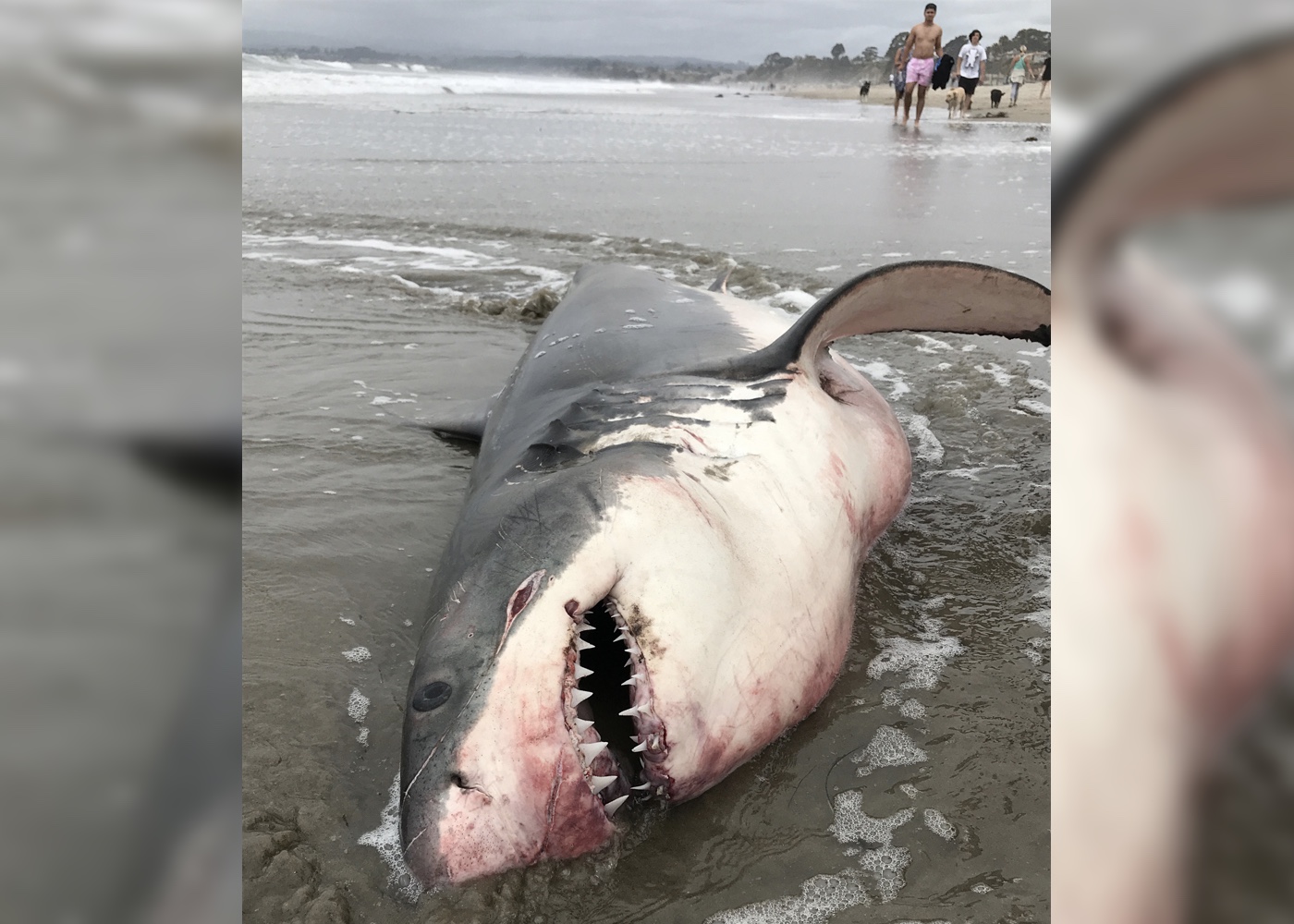
We started the year off with one of the most unusual shark stories we've ever reported on: A California fisherman was convicted of illegally shooting and killing a great white shark. The mysterious death of the 9-foot-long (2.7 meters) great white shark made headlines months earlier when it washed up on Beer Can Beach in Aptos, California, and became the subject of a criminal investigation. Authorities were tight-lipped about the investigation until six months later, when they charged commercial fisherman Vinh Pham for the shark's death. Pham was fined $5,000 and placed on conditional probation for two years.
Read more about the great white shark criminal investigation.
The shark with a fatally large appetite
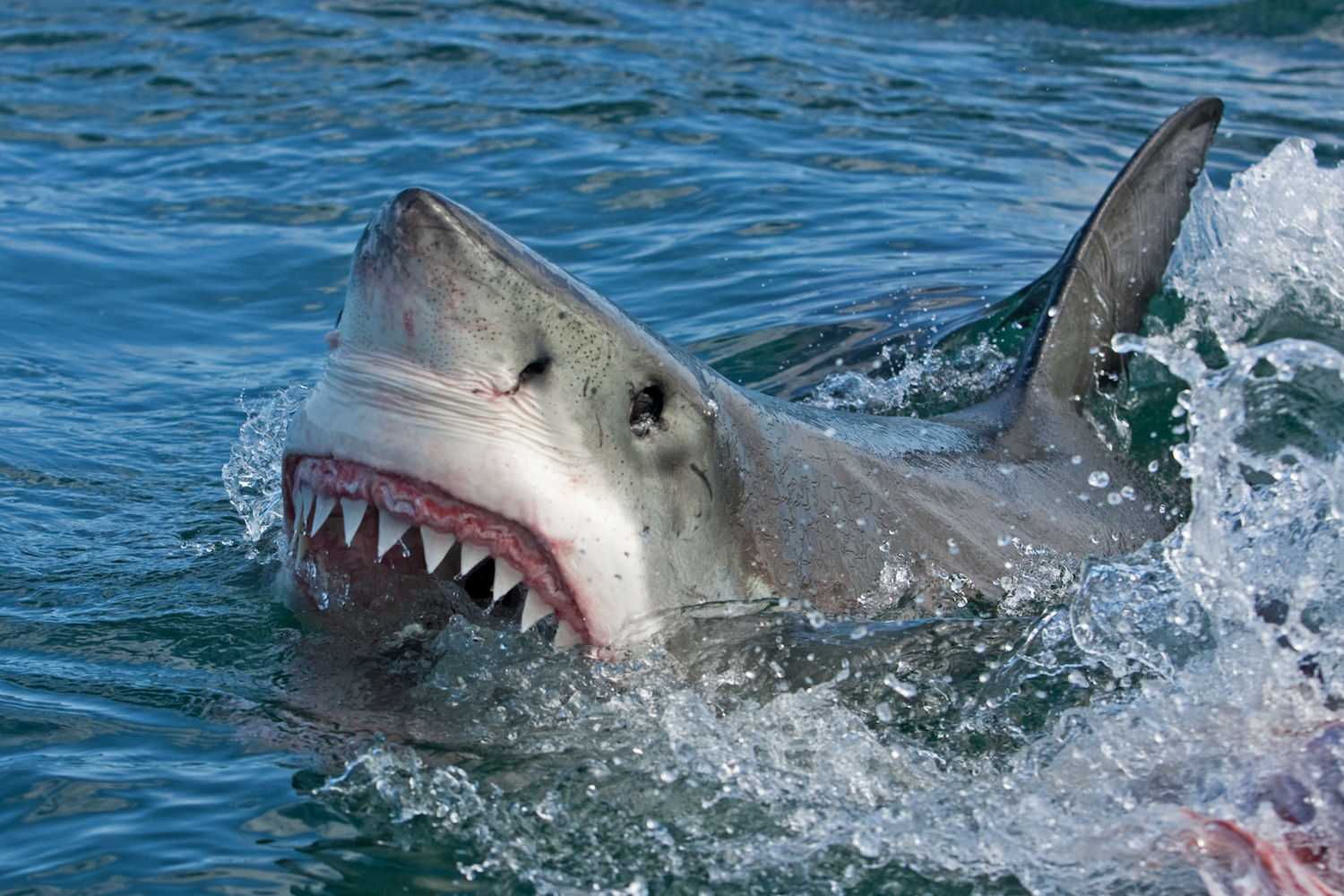
Great white sharks can be ferocious predators, but one of these giant fish overestimated its hunting abilities when it crunched down on a sea turtle and then choked to death. According to one expert, this was a remarkably rare occurrence. Not only is it unusual for a great white to choke on prey, it's even rarer that a great white fits an entire sea turtle in its mouth in the first place.
Read more about this shark's fatal error.
It's a fish-eat-fish ocean, even for sharks
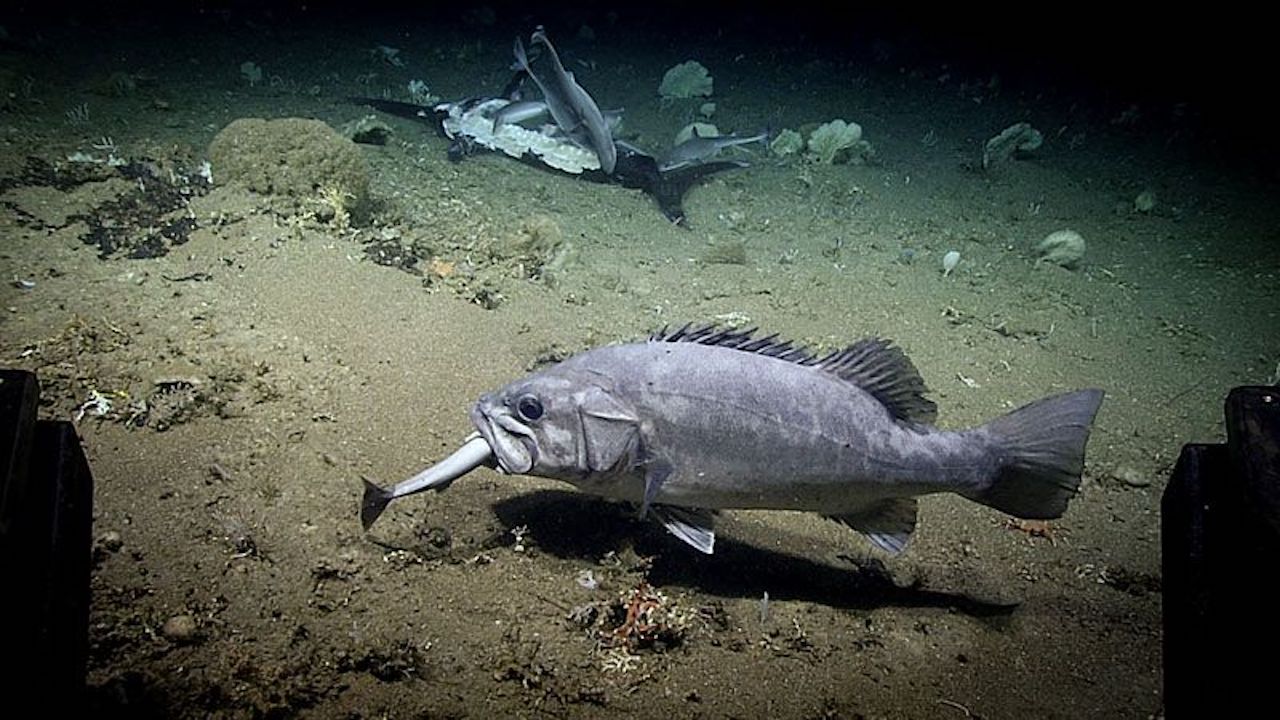
This summer, an underwater remotely operated vehicle from the Okeanos Explorer, a National Oceanic and Atmospheric Administration (NOAA) research vessel, filmed an incredible scene of nearly a dozen dogfish sharks feasting on an enormous swordfish carcass that had fallen to the sea floor. As if that wasn't impressive enough, a few minutes into filming, a goliath grouper (a really big fish) slipped into the picture and gulped one of the sharks down, swallowing it whole. The rest of the sharks remained laser-focused on getting as much of the carcass into their bellies as fast as they could, undisturbed by the larger predator in their midst.
Read more about the dining shark that became dinner.
The great white shark genome
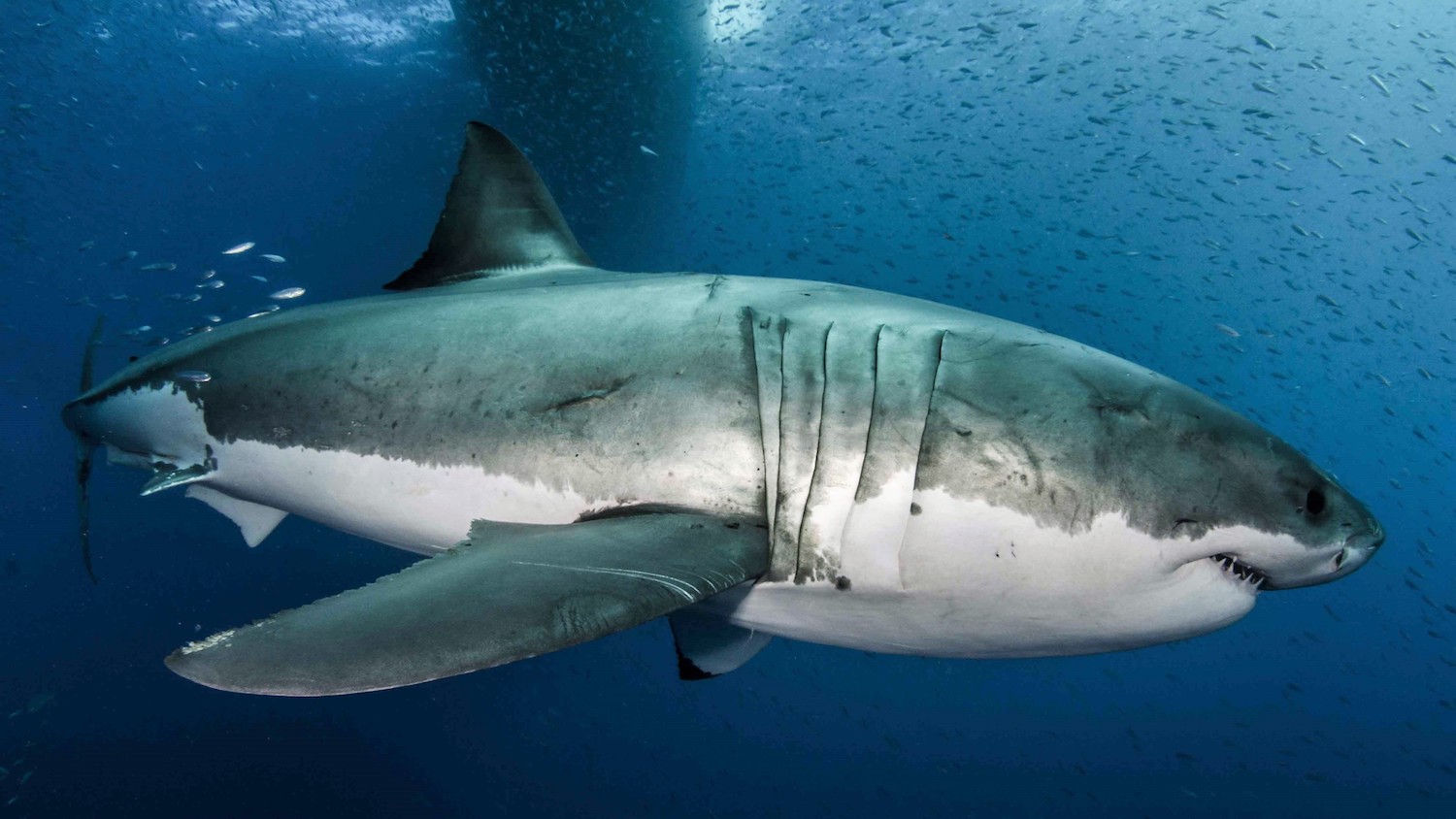
Great white sharks have the seemingly magical abilities to grow very large, live long lives, heal quickly and they probably don't get cancer. How these ocean beasts pull all that off has long been a mystery to scientists, although they're starting to discover clues. Earlier this year, an international team of researchers sequenced the genome of the great white shark and compared it with the genomes of several other vertebrate species. The team discovered a wealth of unusual genetic characteristics that could explain why white sharks are basically the superheroes (or supervillains, if you're a plump sea lion) of the sea.
Read more about the great white shark genome.
A record-breaking pregnancy
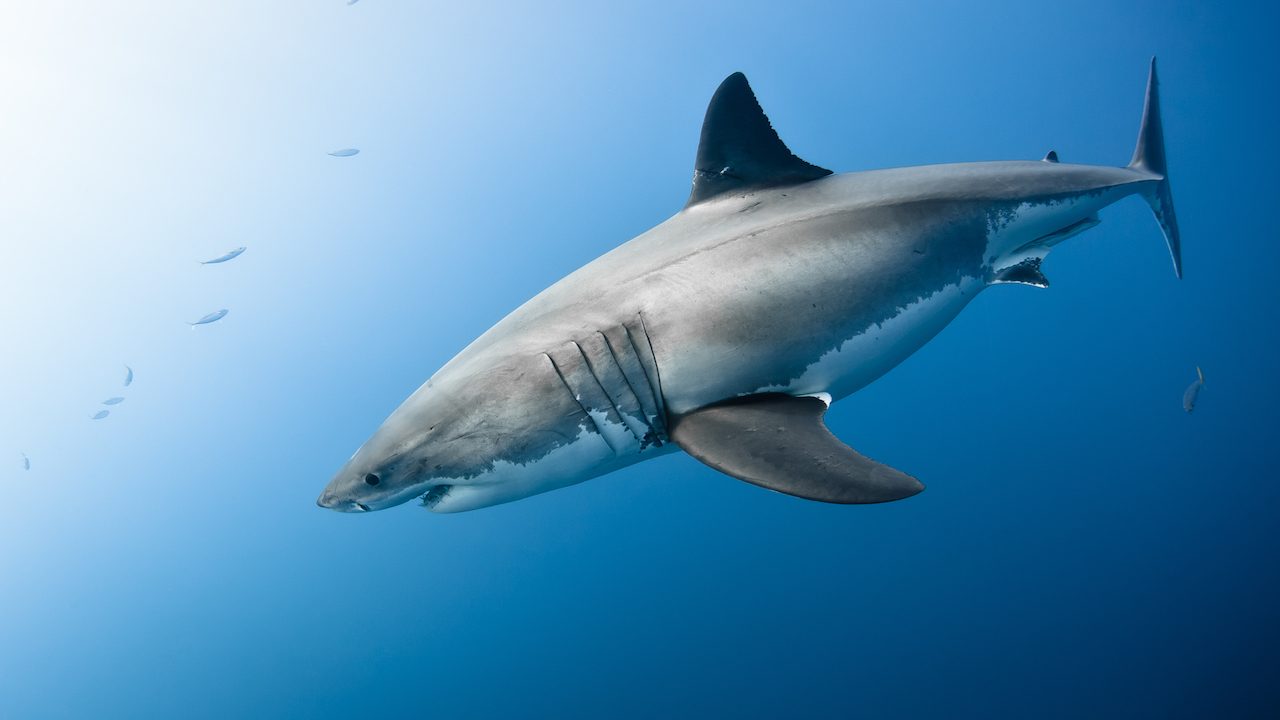
A large, female great white shark pregnant with a record 14 pups was accidentally caught by fishers off the coast of Taiwan and sold at a fish market. The enormous 15-foot-long (4.7 m) mamma was reportedly purchased for less than $2,000 by a Taiwanese taxidermy company. Although this shark suffered an untimely death, it provided a rare opportunity for scientists to examine a pregnant great white shark.
Read more about this record-breaking mamma shark.
This mini sperm whale lookalike is actually a shark
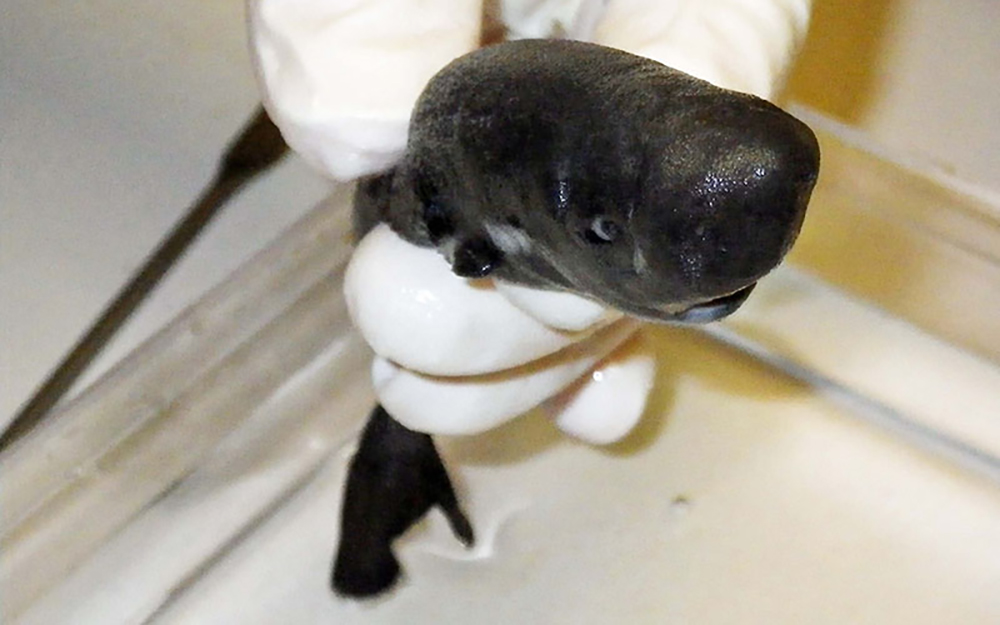
Scientists described a new species of shark that's so small you could hold it in your hand. Tiny, adorable, blunt-headed sharks called pocket sharks are so rare that until just a few years ago, only one individual had ever been collected from the southeastern Pacific Ocean. Then, in 2010, researchers with NOAA caught a second pocket shark in the Gulf of Mexico. Measuring only 5.5 inches (14 centimeters) in length, the wee male shark was identified as a separate species — the American pocket shark, and given the scientific name Mollisquama mississippiensis.
Read more about this adorable pocket shark.
South Carolina's coast hosted some monstrous visitors
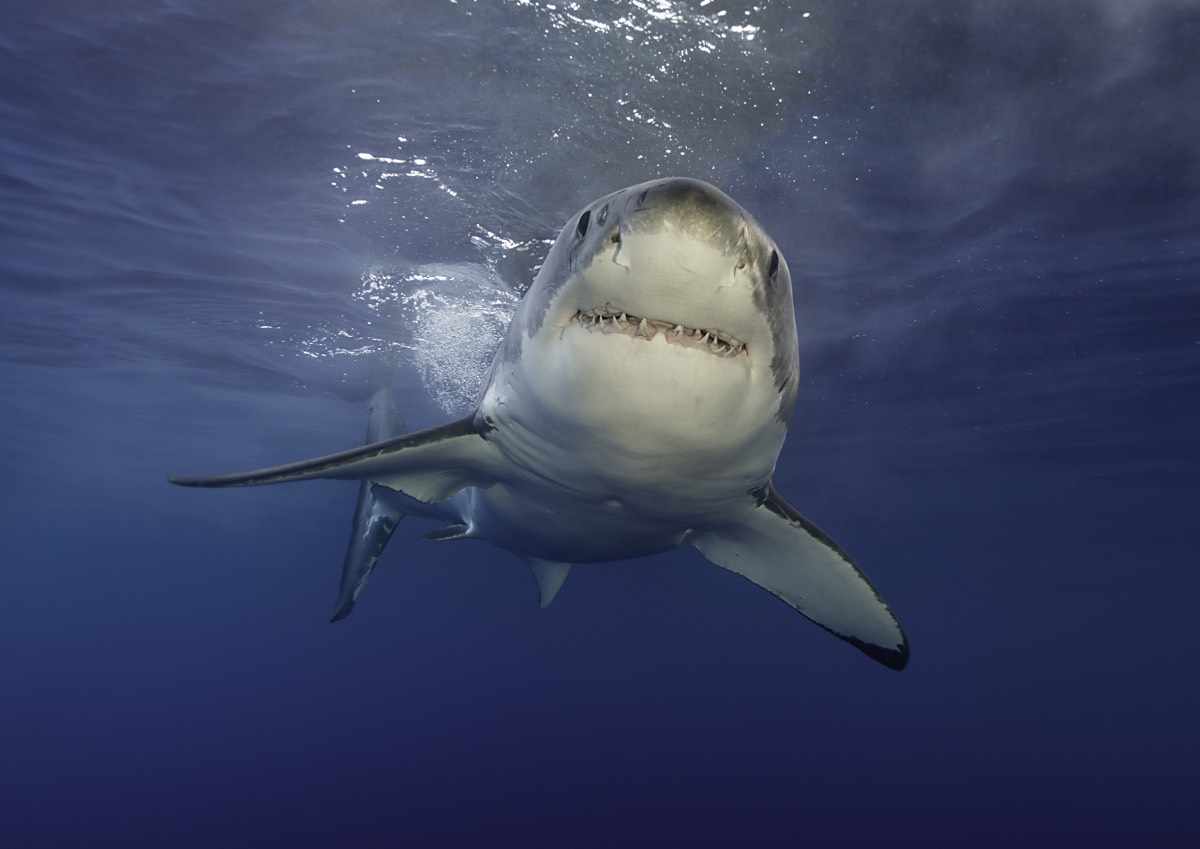
The coast of South Carolina is often blessed with the presence of several great white sharks each year, but two exceptionally large specimens cruised close to shore this past spring. In May, a 15-foot (4.6 m) great white named Luna spent time swimming above an undersea bank about 80 miles (129 kilometers) southeast of Charleston, South Carolina. A smaller shark, Caroline, who clocks in at 12 feet, 9 inches (3.9 m), was hanging out closer to shore at South Carolina's Edisto Beach. At the time, The Charlotte Observer reported that Luna was headed northward to the Outer Banks.
Read more about South Carolina's shark visitors.
Great white shark > megalodon
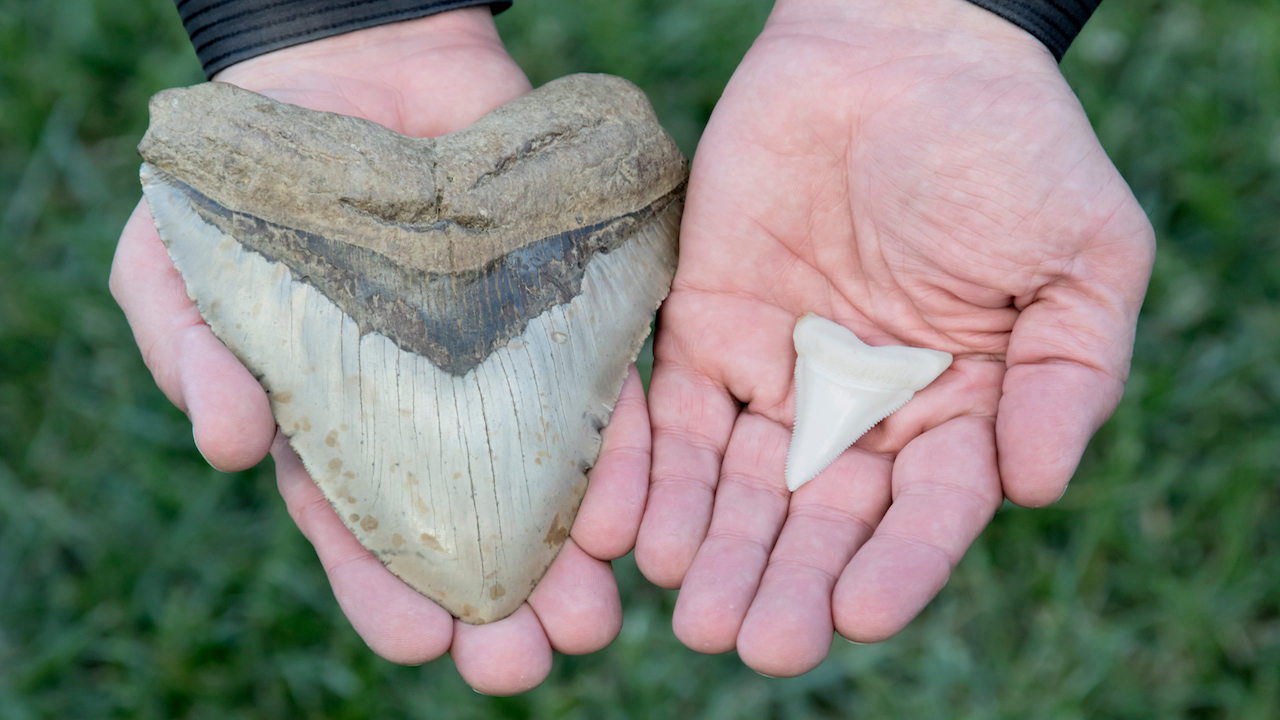
A new study suggested that ancient, massive megalodon sharks were outcompeted by a smaller, savvier predator: great whites.
Scientists used to think the megalodon went extinct around 2.6 million years ago as part of a mass extinction event in the ocean. But the fossil record for these sharks between 2.6 and 3.6 million years ago is rather murky, leading scientists to suspect the giant predator may have gone extinct closer to 3.6 million years ago. Great whites arrived in the oceans about 4 million years ago, just 400,000 years before megalodon's revised death date. So, the researchers said it's possible that the great white eventually beat out the megalodon as a top ocean predator.
Read more about how great whites outlived megalodons.
Shark myth busted
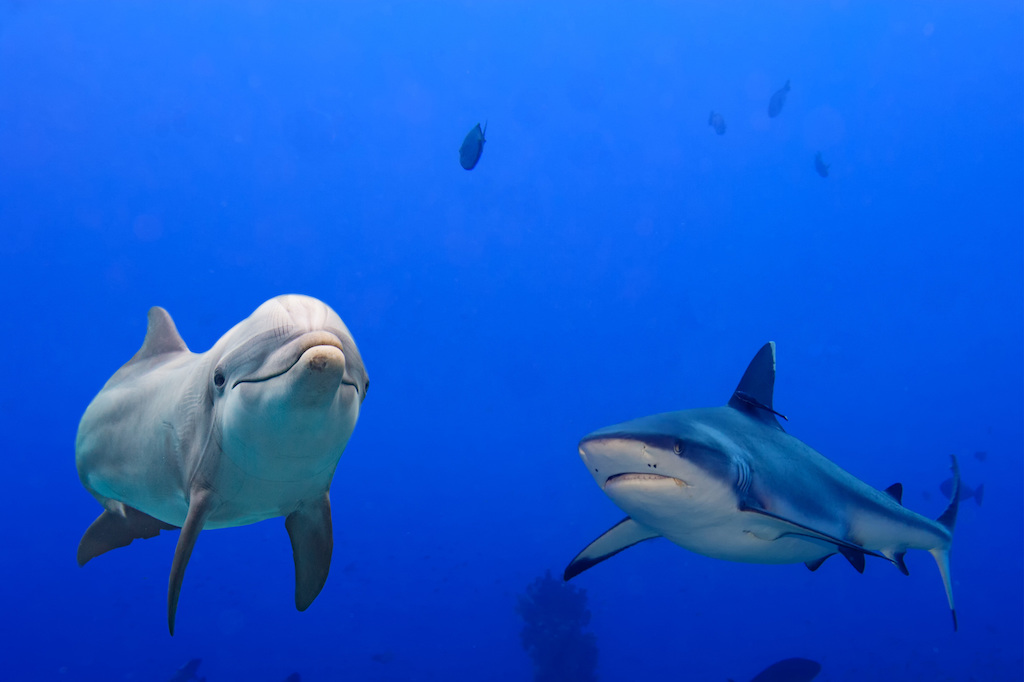
It's a common piece of surfing wisdom that where dolphins swim, there are never sharks. But for oceangoers who take comfort in a pod of dolphins swimming by, shark experts have bad news.
"This is a myth," Andrew Nosal, a shark expert at the University of San Diego, previously told Live Science in an email.
In fact, the opposite is probably true. That's because sharks and dolphins — both of whom are carnivores — go to the same spots to hunt. That doesn't mean the two species are buddies, but don't be surprised to see them in the same area. If you're concerned about sharks in the area you want to swim, experts told Live Science you should avoid swimming when visibility is poor or near areas where sharks like to hang out, like near cliffs or drop-offs.
Read more about the true swimming habits of dolphins and sharks.
A world with no sharks
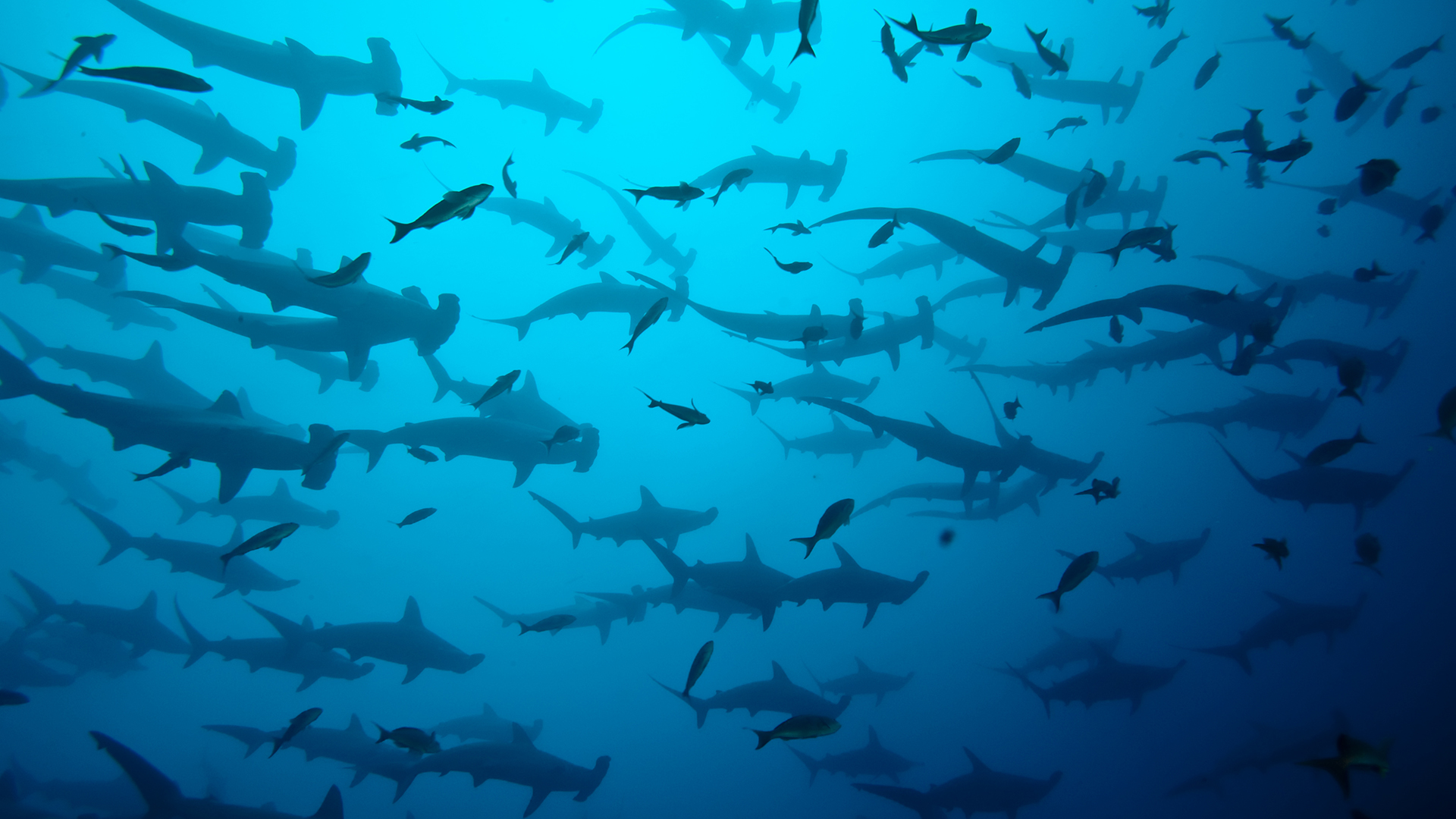
It's depressing to think about, but what would happen if sharks disappeared?
Approximately 25% of all shark, skate and ray species are currently threatened with extinction, according to the Smithsonian Institution's Ocean Portal. In recent decades, some shark populations have declined by up to 90%, reflecting an unsustainable trend of overexploitation in ocean habitats, according to Jenny Bortoluzzi, a doctoral candidate in the Department of Zoology at Trinity College Dublin in Ireland.
If sharks were to disappear, the repercussions on ocean food webs would ultimately affect humans, too.
"Fisheries may collapse, with artisanal fishers being the likely most affected, and popular tourism destinations which rely on sharks to attract tourists will also suffer greatly," Bortoluzzi previously told Live Science.
Read more about what would happen if sharks went extinct.
Originally published on Live Science.
Sign up for the Live Science daily newsletter now
Get the world’s most fascinating discoveries delivered straight to your inbox.

Kimberly has a bachelor's degree in marine biology from Texas A&M University, a master's degree in biology from Southeastern Louisiana University and a graduate certificate in science communication from the University of California, Santa Cruz. She is a former reference editor for Live Science and Space.com. Her work has appeared in Inside Science, News from Science, the San Jose Mercury and others. Her favorite stories include those about animals and obscurities. A Texas native, Kim now lives in a California redwood forest.










